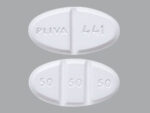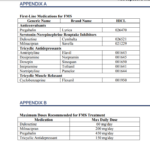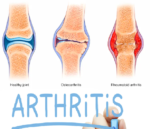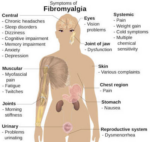Most antidepressants are generally safe, but the FDA requires that all antidepressants carry black box warnings, the strictest warnings for prescriptions. In some cases, children, teenagers and young adults under 25 may have an increase in suicidal thoughts or behavior when taking antidepressants, especially in the first few weeks after starting or when the dose is changed.
Anyone taking an antidepressant should be watched closely for worsening depression or unusual behavior. If you or someone you know has suicidal thoughts when taking an antidepressant, immediately contact your doctor or get emergency help.
Keep in mind that antidepressants are more likely to reduce suicide risk in the long run by improving mood.
Antidepressants and suicide
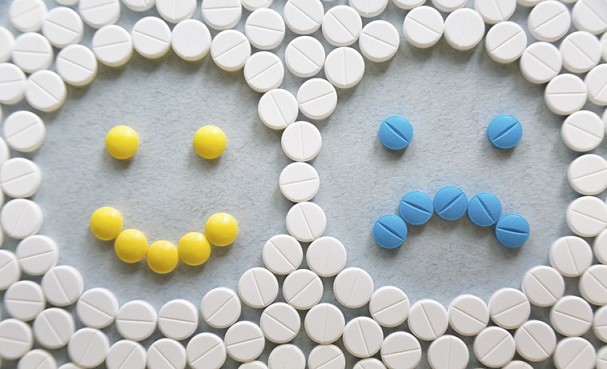
The history of a controversy — and where it stands today.
An often bitter dispute about the risks of antidepressant drug use peaked at an emotional 2004 FDA hearing. It may be coming to a tentative resolution with new recommendations for prescription labeling and further analysis of surveys and clinical trials. The story provides some lessons on the difficulty of making decisions about drug regulation in a context of political controversy and the complications involved in balancing risks and benefits when prescribing psychiatric drugs.
In 1990, Harvard researchers reported that six patients had developed intense and violent suicidal preoccupations soon after starting to take fluoxetine (Prozac), which had been approved for the treatment of depression only two years earlier — the first of the now famous selective serotonin reuptake inhibitors (SSRIs). An FDA expert panel found no evidence for a serious risk in its analysis of clinical trials comparing fluoxetine to a placebo.
In the next decade, while prescriptions for fluoxetine and other antidepressants increased steadily, public and professional attention to the issue faded. But the controversy was revived when the same concerns surfaced in children. In 2002, physicians had begun prescribing antidepressants for children and adolescents. The FDA had not granted specific approval for this, but “off-label” prescribing is a common and accepted practice. In 2003, based on controlled studies, fluoxetine was approved for the treatment of depression in patients age 18 and under. (Since then, fluoxetine, sertraline [Zoloft], and fluvoxamine [Luvox] have been approved for obsessive-compulsive disorder in children and adolescents.) But in that same year, reports of young people attempting or committing suicide while taking antidepressants began to attract attention.
In October 2003, the FDA issued an advisory to physicians and requested an expert analysis of clinical trial data. In March 2004, after a hearing at which parents and adolescent patients presented testimony, the FDA issued a public health advisory covering the SSRIs fluoxetine, sertraline, paroxetine (Paxil), and fluvoxamine, as well as some newer antidepressant drugs, including venlafaxine (Effexor) and bupropion (Wellbutrin). Although the advisory said that it was still uncertain whether these drugs contributed to suicidal thinking, it asked manufacturers to strengthen warnings on the labels and encourage close monitoring of users. Clinicians were told to instruct families and patients to be alert for symptoms suggesting a serious risk of suicide.
In August 2004, the FDA released the results of a meta-analysis of 24 placebo-controlled trials involving 11 antidepressant drugs and nearly 4,500 children and adolescents. The reviewers searched published and unpublished records for language suggesting increased suicide risk — suicidal thinking, suicide attempts, apparent preparations for suicide, and self-injury with possible suicidal intent. Most individual trials showed no difference between drugs and placebos, but when all the studies were taken together, 4% of patients taking antidepressants and only 2% of patients taking placebos were found to have definitely or possibly thought about killing themselves or taken actions that might have led to suicide. There were no completed suicides.
Balancing this risk against the then-known modest benefits of antidepressants for children, an FDA advisory panel, in a split vote, recommended the addition of a black box warning — the most serious kind issued by the agency — to prescription drug labels for all antidepressants in common use.
The warning, ordered in October 2004, describes the results of the meta-analysis and states that antidepressants raise the risk of suicidal thoughts and behavior in children and adolescents.
The warning adds that patients and families must be advised of the risk, and that adults taking antidepressants should also be closely observed for worsening symptoms. For most antidepressants, the warning states specifically that they are not approved for patients age 18 and younger. A special medication guide for families and patients was issued in February 2005 as a package insert.
Antidepressant prescriptions for children and adolescents began to decline as early as the 2003 FDA advisory, and by the time of the new labeling decisions, professional organizations were pushing back. In 2005, the American Medical Association, spurred by the American Psychiatric Association and the American Academy of Child and Adolescent Psychiatry, adopted a resolution stating that antidepressants had not been shown to raise the risk of completed suicide in children and adolescents, and that children should not be denied possibly life-saving medication on the basis of equivocal evidence. The resolution says that SSRIs should be available for children subject to clinical judgment, and recommends that the FDA evaluate the impact of the black box warning and other labeling changes.
In June 2005, the FDA asked manufacturers to provide information from clinical trials for a review of suicidal behavior and thinking in adults treated with antidepressants. The results were announced 18 months later, in December 2006. Two separate analyses of more than 400 clinical trials involving more than 100,000 adult patients came to similar conclusions. They found a slightly higher risk for suicidal thinking and behavior in patients taking antidepressants, compared to placebo, up to age 25. There was no difference at ages 25 to 30, and a slightly decreased risk for older patients, which decreased further after age 65.
On the release of this report, 15 national mental health advocacy and professional organizations issued an open letter emphasizing the risks of untreated depression and urging the FDA to consider carefully the influence of public statements about the risks and benefits of the drugs.
The report was followed by a public hearing at which, in contrast to the 2004 hearing, many speakers opposed further warnings or restrictions. In another split vote, in May 2007, the FDA’s advisory committee on psychopharmacological drugs recommended expanding the black box warning to include patients up to age 25. But it also recommended the addition of language that is unusual for a black box warning — references to the protective effect of antidepressants for older patients and to the suicide risk of untreated mental illness. The FDA is not required to accept the recommendations of its advisory committees but usually does.
A postscript appeared in the form of an April 2007 article in the Journal of the American Medical Association. The authors analyzed findings on more than 5,000 patients age 19 and younger who participated in 27 clinical trials, including several that were not part of the earlier FDA meta-analysis. Fifteen of the studies involved major depression, six involved obsessive-compulsive disorder, and six involved anxiety disorders.
Antidepressants were a little more effective than placebos in treating all three kinds of disorder. The difference was smallest for major depression and greatest for anxiety disorders. The authors estimated that compared to a placebo, an antidepressant would be helpful for 1 out of every 3 young patients treated for anxiety disorders, 1 of every 6 young patients treated for obsessive-compulsive disorder, and 1 of every 10 young patients treated for major depression. Most of the drugs showed an advantage only for adolescents; fluoxetine alone was found effective in children ages 12 and younger.
There were no suicides in any of the trials, but suicidal thinking and behavior were slightly more common in patients taking antidepressants — about 3%, compared to 2% for placebos. The difference was not statistically significant for any of the three disorders taken separately, but only when results from all trials were combined.
The debate will not end with this study or the new FDA recommendations. Placebo-controlled trials are the most reliable way to judge the risks and benefits of drugs, but they also have limitations. Clinical trials might overestimate the risks, because in the real world, the most common alternative to an antidepressant is no treatment at all, which is riskier than a sugar pill that is accompanied by hope-generating sympathetic attention. It is also possible that, instead of having more suicidal thoughts, patients who take antidepressants are simply more willing to admit such thoughts because the drugs make them less withdrawn and more communicative.
There are also reasons why clinical trials might underestimate the risks. They last only a few months, but many patients take psychiatric drugs for years. Besides, the trials can reveal only suicidal thinking and behavior because suicide itself is so rare. A study large enough to detect a statistical difference in completed suicides might require hundreds of thousands of subjects — especially since researchers will not risk giving only a placebo to a person who seems to be suicidal, and some ethics review boards will not approve trials in which depressed children are given placebos.
So it is also useful to consider surveys in which the numbers are large enough to correlate antidepressant prescriptions with actual rather than potential suicides. Studies consistently find that the suicide rate in both adolescents and adults fell throughout the 1990s, while antidepressant use — coincidentally or not — vastly increased. In the year after the FDA’s 2003 advisory, according to a 2007 report from the Centers for Disease Control and Prevention, the number of suicides among persons younger than age 20 climbed by 18%. In December 2006, researchers reported that the suicide rate among children and adolescents in the Netherlands had risen by more than 40% since 2003, when prescriptions for antidepressants in that group began to decline.
Another approach is relating antidepressant use to suicide rates by geographical region. A study published in 2006 found that in the years 1996 through 1998, after adjusting for age, sex, race, and access to mental health care, a higher rate of SSRI prescriptions (number of pills per person) in a given region of the United States was associated with a lower suicide rate in children ages 5 to 14.
But correlations derived from a survey of historical trends or a comparison of different locations cannot demonstrate cause and effect. Changes from time to time and differences from place to place might reflect the availability of treatment, willingness to accept treatment, or some other factor influencing both antidepressant use and suicide.
Further evidence comes from research published in 2006 in the Archives of General Psychiatry. In this study, each of 263 patients hospitalized for depression who attempted or completed suicide was compared with several matched controls, also hospitalized for depression, who did not become suicidal. Antidepressant use was not more common among patients age 19 and older who became suicidal than in controls who did not.
But there was a difference among children and adolescents. Of patients aged 18 and younger who attempted suicide, 46% had taken antidepressants, compared with 36% of matched controls. Three of the eight young people who died by suicide had taken antidepressants, compared with three of 39 matched controls. Surprisingly, patients who attempted or completed suicide were not more likely to have taken SSRIs, except sertraline. They were more likely to have taken the newer antidepressant venlafaxine or one of the older tricyclic antidepressants.
| References Bridge JA, et al. “Clinical Response and Risk for Reported Suicidal Ideation and Suicide Attempts in Pediatric Antidepressant Treatment: A Meta-Analysis of Randomized Controlled Trials,” Journal of the American Medical Association (April 18, 2007): Vol. 297, No. 15, pp. 1683–96. Isacsson G, et al. “Forensic Database Study Suggests Selective Serotonin Reuptake Inhibitors Do Not Increase the Risk of Suicide in People Taking Antidepressants,” Acta Psychiatric Scandinavica (April 2005): Vol. 111, No. 4, pp. 286–90. Leon A, et al. “Antidepressants and Youth Suicide in New York City, 1999–2002,” Journal of the American Academy of Child and Adolescent Psychiatry (September 2006): Vol. 45, No. 9, pp. 1054–58. Mann JJ, et al. “ACNP Task Force Report on SSRIs and Suicidal Behavior in Youth,” Neuropsychopharmacology (March 2006): Vol. 31, No. 3, pp. 473–92. March J, et al. “Fluoxetine, Cognitive-Behavioral Therapy and their Combination for Adolescents with Depression: Treatment for Adolescents with Depression Study (TADS) Randomized Controlled Trial,” Journal of the American Medical Association (August 18, 2004): Vol. 292, No. 7, pp. 807–20. Tiihonen J, et al. “Antidepressants and the Risk of Suicide, Attempted Suicide, and Overall Mortality in a Nationwide Cohort,” Archives of General Psychiatry (December 2006): Vol. 63, No. 12, pp. 1358–67. For more references, please see www.health.harvard.edu/mentalextra. Further information is also available at the FDA Web site, www.fda.gov. |
Compared to a historical or geographical survey, this kind of study, which is called a case-control study, has the advantage that matched controls exclude some sources of error in interpreting the data. In this case, its advantage compared to clinical trials is the ability to record actual suicides, as opposed to suicidal thinking and behavior. But, like surveys, case-control studies reveal only correlations, and there is no guarantee that cases and controls are properly matched; for example, in this study, children and adolescents who were given antidepressants might have had more serious depression to begin with.
The uncertainties will not soon be entirely resolved. By most standards, including the chance of death by an accidental or deliberate overdose, SSRIs in particular are remarkably safe drugs. But no drug can be guaranteed to do no harm. Some patients who take antidepressants may risk suicide because they recover the ability to act before their mood returns to normal. A few develop the side effect of akathisia, a kind of extreme restlessness and agitation that can make life seem intolerable. Antidepressants may be prescribed for what turns out to be bipolar disorder. This condition is particularly difficult to diagnose in children, and some believe antidepressants can make it worse.
The best way to get the benefit of antidepressant treatment while decreasing the risk of suicide is careful monitoring and regular follow-up by a clinician. Parents should be warned that suicidal thoughts may come on abruptly. They should contact the prescribing clinician if a child begins to feel worse, develops new symptoms or shows a noticeable change in behavior or thinking. Examples are a change in appetite, sleep or energy, becoming anxious, irritable, hostile or socially withdrawn, or revealing uncharacteristic thoughts or preoccupations. The danger is greatest in the first few weeks after starting a new medication or changing the dose.
Pediatricians without psychiatric training have become more cautious about prescribing antidepressants for children, and that is probably wise. Surveys show that they are now more likely to refer children with serious depression to mental health professionals, who will also be more cautious. But the danger should not be exaggerated. In a survey conducted in 2006, nearly 10% of college students said they had seriously considered suicide, and 1% had attempted suicide. Mental disorders — especially depression, anxiety, or psychosis — are among the most serious risk factors for suicide. So, for many adults and children, antidepressant treatment can make a vital contribution to reducing suicide risk. In the effort to prevent suicide, focusing on one risk to the exclusion of all others may ultimately do patients a disservice.

